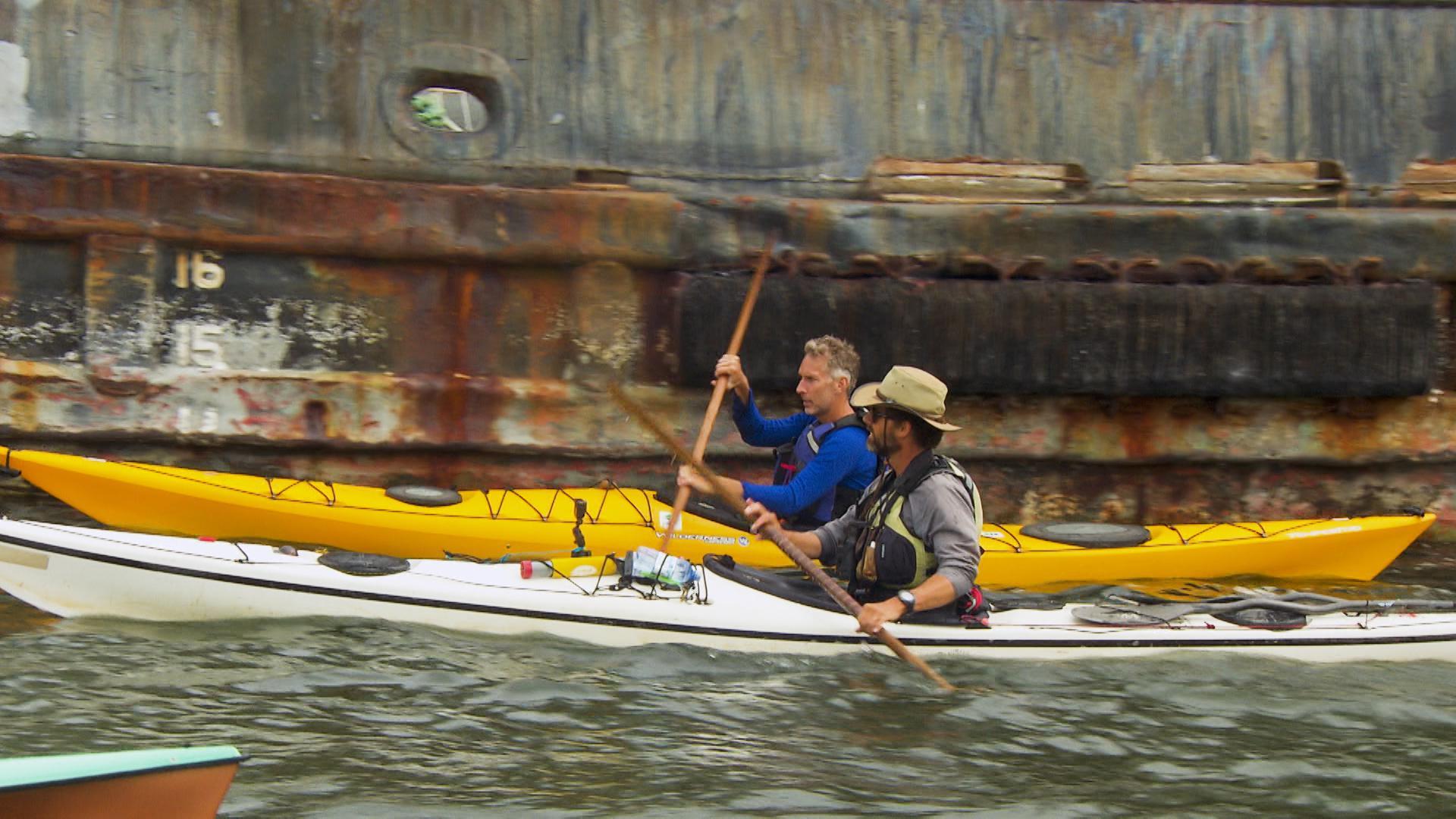Naturalist Andrew Emlen paddled a few strokes in his 17-foot kayak, grabbed the binoculars hanging from his neck and looked at a line of fishermen in the distance.
Then he looked behind him at a barge moving up the shipping channel.
“Yeah, we may need to stay on this side for a little bit, huh?” he said to his kayak companions, Kyleen Austin and Chris Hathaway. “Because the worst offense a kayaker can make is run into a hog line of fishermen.”
The group was navigating the Lower Columbia River. With a flow greater than any other in the West, the Columbia River is the river everyone seems to know about but doesn't really "know." The Lower Columbia Estuary Partnership would like to change that — with a water trail you can paddle.
It's called the Lower Columbia River Water Trail, and it follows the free-flowing, tidally influenced waters of the Columbia River for 146 miles, from the Bonneville Dam to the Pacific Ocean. It's an intimate way to experience a river that holds the region's history in its mighty path.
Related: Native American Culture And Tradition Thrive Through Canoe Journey
Chris Hathaway, of the Lower Columbia Estuary Partnership, started coordinating the trail back in 2001 to promote stewardship of the river he has spent his career working to protect. "The more people are out here experiencing the river, the more people are going to care about the river, want to restore and protect it," Hathaway explained.
The trail moves paddlers from the heart of the Columbia River Gorge and into the soul of urban Portland and Vancouver, past wildlife refuges, river towns and islands, before ending with the pulsing waves and surging tides of Astoria. It’s a “choose-your-own-adventure” trail.
With 8-mile-wide stretches and protected sloughs, the paddling is as diverse as the scenery, with safe options for paddlers of all skill levels. With an eye on weather, wind and tides, an experienced paddler could complete the entire route in seven days, but most opt for day trips or shorter overnight trips like this group’s two-day paddle from County Line Park in Cathlamet, Washington, to Skamokawa, another Washington town 16 miles downriver.
“The Columbia River Water Trail is more than just a way to get exercise. It’s a way to really know this place,” said Emlen, who has led kayak trips on this stretch of the river for more than 20 years. “This is the major artery that can tell the history of our region. And every bend tells a story.”

In a single afternoon, the group peered into the mossy frame of the Sara Frances, a derelict boat swarming with barn swallows and song. They examined the imprint of an exploded tree enveloped 16 million years ago by the Grande Ronde basalt flow. They glided past the pilings of the 1869 Warren Cannery and the Julia Butler Hansen Wildlife Refuge — home to the second-largest Sitka spruce swamp in the Lower 48. They paddled past rusty tug boat hulls and banks rich with history, wildlife and color, before stopping to stretch their legs at river mile 38 for a bite and a beer.
Emlen, Austin and Hathaway checked maps and tides before climbing back in their kayaks. It’s a dynamic river system with up to 12 feet of tide change in a day, so paddling within your skill level and planning are key.

Andrew Emlen, Chris Hathaway and Kyleen Austin study maps on the shore of Lark Island, a sandy dredge spoil east of Tenasillahe Island.
Nick Fisher / OPB
"It’s not something that you can just, ‘Oh hey, it’s sunny outside, it’s calm, there’s no wind, it’s a beautiful day, let’s get some inner tubes and go out into the shipping channel," Austin warned.
"No, you don’t want to do that. Cause in July, I’ve had it go from glass to 15-knot winds like that," she said, with a snap of her fingers.
The Lower Columbia Estuary Partnership provides resources to plan your adventure, including an interactive map showing launch sites and suggested places to camp.
As the afternoon wind picked up, three kayaks skidded to a stop on the empty beach of Lark Island. Hathaway set up his tent on a sandy bluff as the 25,000-ton tanker, Tiger Glory, passed below, sending rhythmic waves to the shore. The smell of simmering onions rose off a skillet balancing on top of a kayak. Colors deepened in the sky.
When asked what makes this experience on the Columbia River so special, Austin responded, “It changes everywhere you look, every time you turn, you’ve got a different light, you’ve got a different color and you have some different kind of wildlife. And, it’s, it’s joyful.”

Kyleen Austin points toward Cathlamet, Washington, from their campsite on Lark Island.
Nick Fisher / OPB
